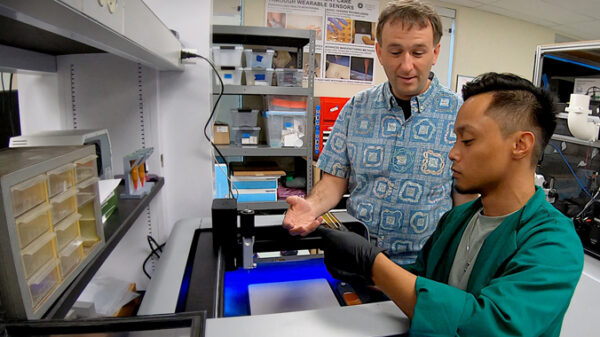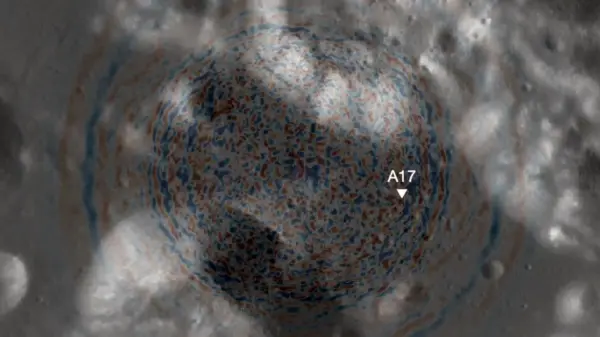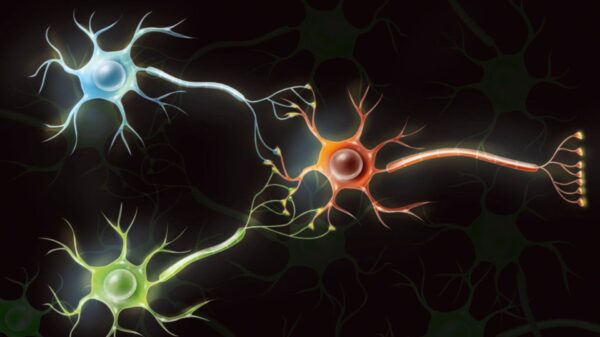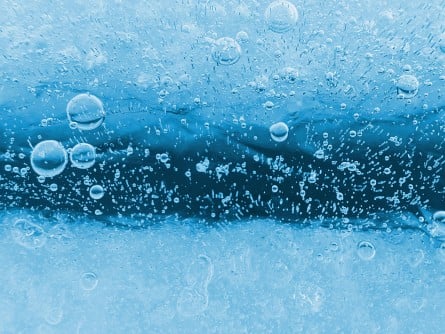A groundbreaking study conducted by researchers at the Pacific Northwest National Laboratory (PNNL) reveals that ice, despite its crystalline structure, exhibits remarkable flexibility and malleability. This unexpected characteristic helps explain the presence of gas bubbles trapped within ice. The findings, published in the journal Nature Communications, mark a significant advancement in our understanding of ice’s physical properties.
For the first time, scientists were able to observe the molecular transition of water from liquid to ice. Previous methods used to study this transformation often involved extreme conditions, such as high-energy radiation and vacuum sealing, which did not accurately reflect natural freeze-thaw cycles. To overcome these challenges, the research team utilized thin carbon membranes to encase liquid water, enabling a breakthrough in imaging techniques.
James De Yoreo, principal investigator and a Battelle Fellow at PNNL, explained, “We observed dissolved gas not only generate cavities in ice crystals but also migrate, merge with other gas bubbles and dissolve—behavior that is only possible due to the unusual nature of bonding in ice.” This observation opens new avenues for exploring ice crystallization and melting processes at nanoscale dimensions.
Implications for Science and Industry
The implications of this research extend beyond academic curiosity. Understanding how ice accommodates structural imperfections can have far-reaching benefits, including advancements in the preservation of cryogenic biological tissue, improved forecasting of ice behavior for aviation and vehicle safety, and enhanced comprehension of glacier dynamics.
Jingshan Du, lead author of the study, emphasized the importance of these findings. “There have been many mysteries about ice. We want to understand how ice tolerates structural imperfections in the crystal and how trapped bubbles affect the mechanical properties of the crystal. Now we have a way to understand that,” Du stated.
The study’s innovative approach involved using cryogenic liquid-cell transmission electron microscopy to monitor the freezing process. This method allowed researchers to observe gas bubbles forming, migrating through the lattice, merging with others, and ultimately dissolving without significantly stressing the ice crystal structure. The findings indicate that ice adapts to defects far more easily than other solids, such as metals or minerals, due to the unique properties of water’s chemical bonds.
Further Research and Future Directions
In addition to the fundamental insights provided by this study, the research team collaborated with scientists from Argonne National Laboratory and the University of Illinois-Chicago. Together, they developed a highly accurate molecular dynamics model for ice using machine learning. The comparison of experimental results with theoretical predictions affirmed that ice is exceptional among solids in its ability to tolerate defects without compromising its structural integrity.
As the PNNL team continues to investigate ice dynamics on a nanoscale, other researchers are also exploring the effects of air bubbles in glaciers. Recent studies suggest that glaciers with trapped air bubbles can melt more than twice as quickly as those without. Understanding these dynamics is crucial for predicting climate change impacts and managing water resources.
Next steps in this research will include studying the melting processes of ice and exploring more complex samples, including water with dissolved materials. The study received support from the Department of Energy (DOE) Office of Science, Basic Energy Sciences, Division of Materials Science and Engineering, and highlights the collaborative efforts of multiple institutions.
This new understanding of ice’s flexibility and behavior has the potential to reshape various scientific fields and industries, ultimately enhancing our comprehension of one of Earth’s most vital substances.





































































